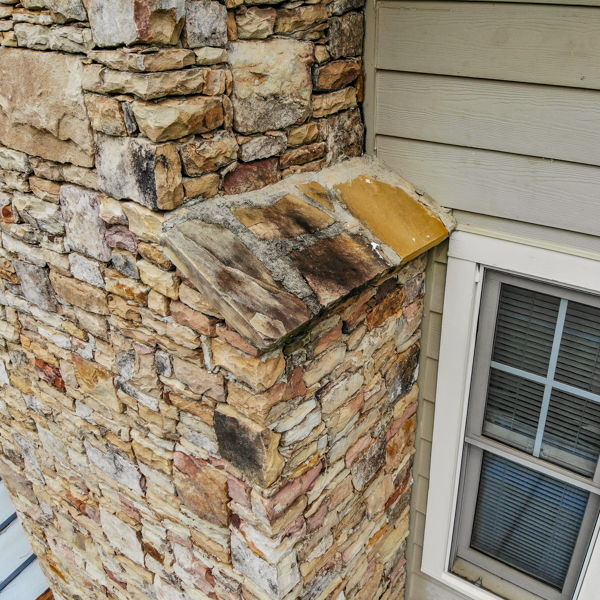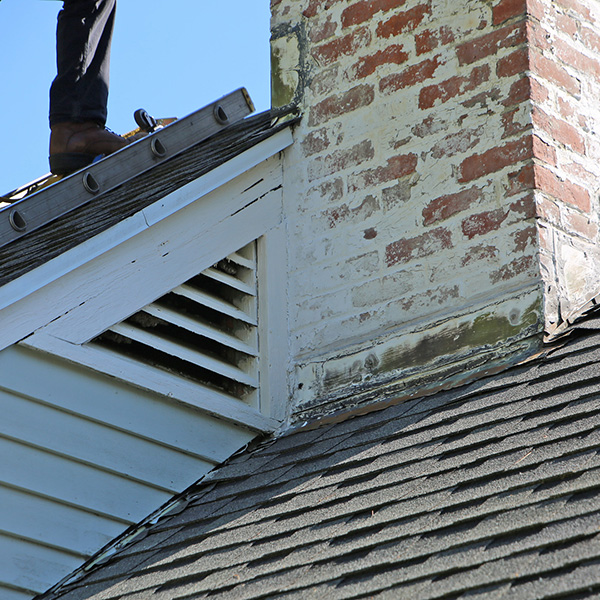Identifying and Fixing Chimney Discoloration This Summer
Have you ever noticed an unexpected stain appear on or near your fireplace? Staining is not only unsightly, but it’s also typically indicative of an issue somewhere within your fireplace system. Since your chimney is likely sitting unused this summer, now is the perfect time to correct any problems. Read on for our tips on identifying and fixing chimney discoloration this summer.
Black stains
The appearance of black stains on your chimney is typically due to soot residue resulting from a lack of regular cleaning.For these stains, a simple cleaning is all it takes to restore the pristine front of your chimney. For others though, it can be indicative of a deeper issue. Creosote buildup, with its thick, tar-like residue, can have disastrous results if left to accumulate and not removed.

Dark green
If you notice dark green staining on your chimney, this is algae growth. This means that you might have a water issue somewhere inside of your chimney. Moisture in your flue will almost always lead to internal damage. In addition, excess dampness in your home can lead to mold or mildew growth that can then turn into a much larger problem to fix. Oftentimes, it’s hard to determine whether a dark stain like this is actually algae growth or soot so an inspection by Chimney Specialists is recommended to diagnose and repair.
Red (orange, light brown)
If you see a reddish-brown discoloration on your chimney then it is being caused by rust, right? Sometimes yes, sometimes no. A rusty chimney cap could be to blame and simply replacing it and cleaning up the streaks will take care of the staining. However, the appearance of reddish stains on your chimney could also be evidence of creosote buildup. Yes, creosote is black but when it mixes with rainwater it can take on a reddish hue. Besides rust and creosote, a brownish red-colored stain could also be caused by a compound called manganese. Typically seen in newer built homes, this occurs when a component that contains manganese oxide is exposed to an acid followed by water.
 White
White
White discoloration on your chimney is not exactly a “stain.” The most common culprit is a powdery substance known as efflorescence. This material is leftover salt crystals after the water evaporates from a surface. Efflorescence is a naturally occurring substance but its existence is a problem as it is likely indicative of moisture inside the chimney and a need for waterproofing. Externally, this can be caused by rain or lawn sprinklers but it’s still a good idea to schedule an inspection to be sure your chimney is watertight. Occasionally, white streaks on your chimney could be caused by lime run or white scum as well. Both of these are deposits left by moisture getting into your masonry or improper cleaning. Once again, moisture remediation will rectify the situation and protect your home from more damage.
DIY Stain Removal
Simply put, a stain removal do-it-yourself job is not recommended. While you can probably clean stains lower to the ground just fine, trying to remove stains on your rooftop and upper chimney is more dangerous. Leave this job to the professionals such as the team at Chimney Specialists.
We are licensed, insured, and trained to take care of all these issues and more. Just give us a call at (608) 929-4887 or visit our website and fill out the contact form online.














